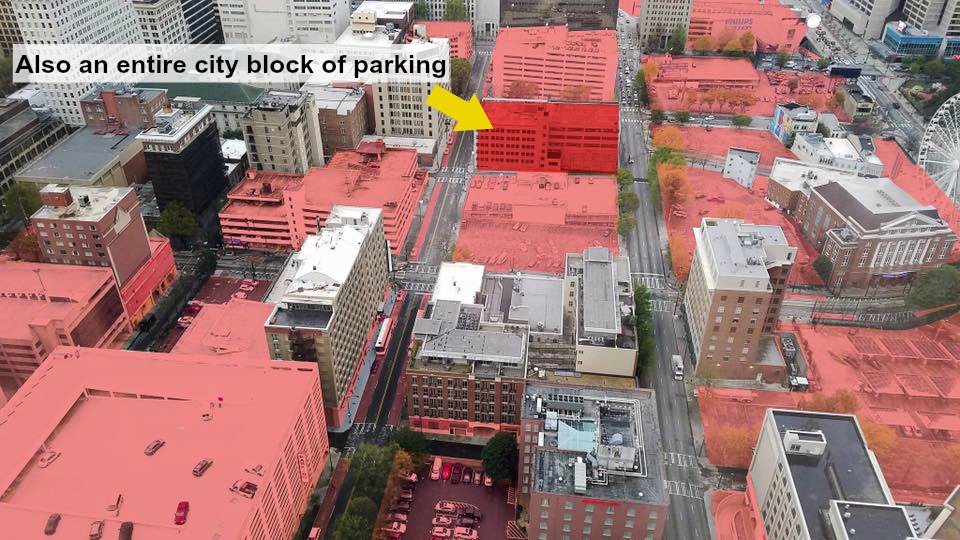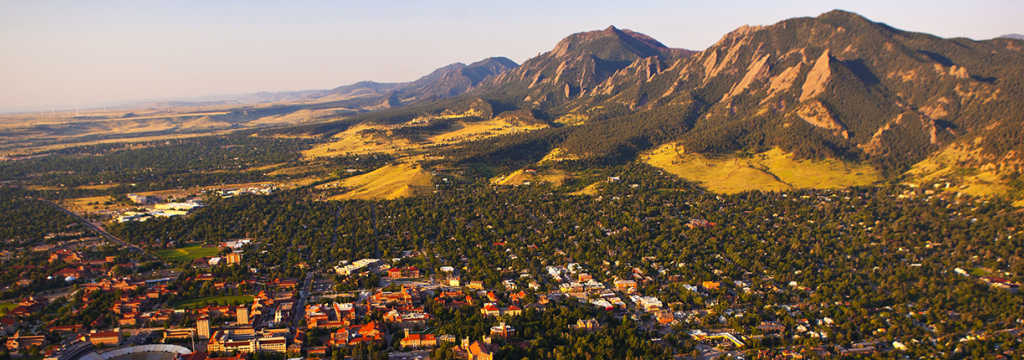Looking back on 2017, I was fortunate enough to live in three different places. In fact in the previous three years, I was able to live and study in five different cities, each with their own culture, dynamic, and difficulties. Through my experiences, observations, and studies, I have noticed a few common trends occurring among these places, and in this blog I'd like to analyze these trends. I'm going to focus on homelessness, affordable housing, and community values.
First, it is time to acknowledge systemic homelessness that affects every community. Families are being forced out of their homes and onto to the streets more and more. Whether it be urban, suburban, or rural, this is a widespread issue; it affects everyone. In the United States, families unable to pay rent are evicted often without a place to go and with no help from the government. Their last resort becomes motels along the interstate that dot every exit. Similarly in Ireland, families are evicted from homes and their communities, and while the government does house these families impermanently in hotels, this isn't a solution.
 |
| Motels such as above have become impermanent places of residence for too many families |
I wonder why homelessness isn't just increasing but proliferating particularly with more families falling homeless? And what does it say of our society that we aren't outraged and called to action by the fact that children are left stranded on the street? Every human has a right to housing, yet we as a society can't even be bothered by the homelessness of some of our community's children.
I'll be honest in that I haven't done much reading and study on homelessness. This trend I've noticed with my own eyes and through conversations with those around me in my community. While I wish to continue researching and reading up on homelessness and the many facets that cause it, I currently do not know of any quick fix within the current planning system to solve systemic homelessness. Yet we as individuals can do small things to alleviate homelessness. We can start at our local schools and find out what homeless students need from school councilors. We can make small scale solutions like local food banks at community schools, more job fairs at community schools and churches, a goodwill service that works on a hyper-local scale, and accessible community gardens. While a lot of these solutions already exist, they matter not if homeless persons can't access them. The point being that we need to ensure there is equity and accessibility in the solutions being forwarded particularly in the deformed, sprawled-out places many of us live in. Twenty small food banks better serve the local communities then one giant warehouse inaccessible to the majority who need it. Smarter, more commonsense solutions are required on a community-by-community basis to alleviate current homelessness within our own communities and in our own backyards.
In a similar matter, communities aren't being provided enough affordable housing. The housing crisis worsens in Europe while in the United States, its effects are still impacting the housing market. Put simply, the housing market has failed us. Its need to provide adequate and affordable housing seems impossible to the private market. Public-private partnerships created to produce social housing ended up failing in the face of the recession or when successful, don't provide enough housing. Inclusionary zoning makes only a dent in the need to continue producing affordable housing. The neo-liberal policies that decimated public housing budgets and replaced them with "partnerships" and external funds have failed. Let us stop lying to ourselves in hope that affordable housing will trickle down from the top because it will not. American and European governments will revert back to these same failing policies, and the problem will only worsen.
A change in policy is needed. In one of my geography classes, the lecturer coined this term: "Affordable housing is inadequate and adequate housing is inaffordable." But this shouldn't be. With all the wealth and money the Western countries have, we should be able to provide both affordable and adequate housing for our citizens. The key is a return to social housing. About 50% of the housing stock in the city of Amsterdam is social housing. Similarly, beyond 70% of housing in Austria is public. Public and social housing in these places take on a new nuance, they aren't places to be scorned or segregated but places that provide equity and homes for its people. If we, as a society, cannot rely on the private market to produce affordable housing, then demand the government provide it. High quality, well designed social housing will come to fruition if public housing programs are 1) funded fully again and 2) expected to provide affordable housing. Sometimes, the private market doesn't work, and in the case of affordable housing, a government-led initiative will provide the results that we seek.
 |
| What looks like luxury living in a place like New York is actually social housing in Vienna |
In the meantime, what can we do? Getting involved at a local scale and demanding affordable housing would be a start. Far too often, affordable housing projects are pushed away from affluent communities because of intolerant residents who seek a certain lifestyle apart from others. The idea that they lead separate lives from another income group is ridiculous. In fact, these residents in many ways are reliant on the people who need affordable, social housing. More people going to the local planning commission and demanding that certain plots and zones be reserved for affordable housing would make a difference. Affordable housing can be made right now, but it takes an army of community activist to ensure its delivery in our government's current neo-liberal state of functioning.
That last idea draws into my final observation. Despite more ways of connecting, more ways to get involved and make a difference, communities seemed to experience the opposite effect. Residents are less engaged, less interested, and more apathetic about the change occurring around their own neighborhood now more than ever it seems. If a horrible development has been proposed, community residents often lack motivation to fight it. For instance in Cincinnati, a twelve year legal battle resulted in a big box store development only a few miles from its downtown. By the end of the legal process, residents were too tired to fight for a smaller scale, more walkable development in what was a relatively walkable area.
 |
| Oakley, Cincinnati- one site plan of a contested development |
Bedford et al. (2002) argues that the system of participation in the planning process is what isn't working. She notes that while residents did go to planning meetings and voice their concern in her London case study, their concerns for the most part were looked over by the planning commission and the developer. But on the other hand, she also notes how there is less enthusiasm, less of an appetite for participation causing less political will to enforce new policy and better development.
I find it hard to believe that citizens just don't care about what is going on around them, so I tend to agree with Bedford in that the participation system is broken. When people try to make a difference, try to object to the planning process, more times than not they are shut down by the planning commission and developers. In the current neo-liberal condition of most governments, commissions and developers will sacrifice the community's wants for economic development.
This infiltration of money doesn't just mark the participation process, I believe. It has infiltrated the very values our communities live by. Instead of focusing on the needs and wants of its citizens, communities focus on the needs and wants of its economy. I acknowledge that economic progress is essential to providing for one's people but economic interests shouldn't supersede everything. The idea that social programs take away someone's taxpayer money and wastes it on a useless program is ludicrous. Cutting social programs and funding for social programs will only worsen the poverty around you. Forcing people "off the teat of government" (as I have heard social programs be called...) will only serve to hurt them and eventually yourself. There is a reason the middle class is diminishing but when words like "social welfare" have a negative connotation I wonder why the middle class is diminishing with no programs to promote upward mobility? When we cut taxes in the name of greater economic freedom, I wonder why more people are less equipped to better themselves with less public funds to go around their own community? When people say the government doesn't work for them, I wonder why it doesn't work when the government can barely balance its own budget? I wish we could acknowledge the truth that neo-liberalism is just a pretty word for corporate welfare state. Unfortunately, it seems we've let this pretty word seep into our very own communities that are hurting now more than ever.
 |
| Affordable housing along the Atlanta Beltline, the Beltline being a prime example of community residents taking control of their space (albeit still with many challenges) |
To change this would require a generational shift it seems. Luckily, the millennials and the generation after them may be whom to place our new hope, so-to-speak. Greater information is being spread, and people are more worldly. Alternatives exist to our current state of being, but change is necessary to seek any alternative than what is occurring. In our own communities, we need to get more involved, vote in representatives that actually look like their community, and take ownership of our community. As Ryan Gravel likes to say, the Atlanta Beltline isn't the Atlanta Beltline without Atlantan's ownership of the space. So don't be afraid to demand more out of your local school, local park, or community center. Take back the reigns of public space and make them work for you. I guarantee you, others will appreciate and support your efforts.








/cdn.vox-cdn.com/uploads/chorus_image/image/47923781/NO_20MARTA_20Sign_20_281280x778_29.0.jpg)









